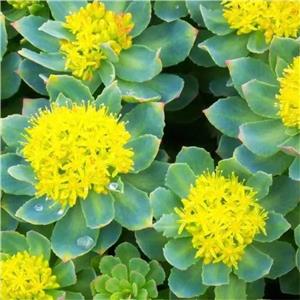What is a CITES permit?
What is a CITES permit?
A CITES permit is a document that authorizes international trade in specific timber, plants and animals listed under the Convention on International Trade in Endangered Species of Wild Fauna and Flora (CITES).
Obtaining a permit is essential to maintaining global biodiversity, as it regulates and monitors trade in endangered species, ensuring it is sustainable and legal.Depending on the species and type of trade, you will need an export, import or re-export permit. Obtaining a CITES permit is subject to strict checks and compliance with international and national regulations.
Permits are issued by the designated CITES authority in each participating country, in accordance with the guidelines set out by the convention.

CITES protection applies to endangered plants and animals in any form, alive or dead, in whole or in part, or any products made from them.
What is CITES?
CITES is an international agreement between 184 governments around the world to ensure that international trade in wildlife, timber and plants does not threaten their survival.
Established in 1975, CITES provides a legal framework to prevent overexploitation of endangered species through illegal trade. Member countries work together to regulate and monitor trade in thousands of species.
The import, export, re-export and introduction of all CITES covered species are authorized through a permit system.
Each party designates one or more Management Authorities to administer the permit system and one or more Scientific Bodies to advise them on the impact of trade on the status of species.
What are the differences between CITES Appendices I, II and III?
CITES lists species in three appendices, depending on the level of protection required:
Appendix I: Species threatened with extinction. Trade in such specimens is strictly regulated to protect their survival.
Appendix II: There is no immediate threat of extinction, but the species may become extinct without appropriate protection and conservation.
Appendix III: Species protected in at least one CITES member country that has requested cooperation from other CITES parties to control trade.
Do I need a CITES permit?
If you are involved in international trade in any animal or plant species listed in the CITES Appendices, you may need a CITES permit. CITES permits cover activities such as export, import, re-export or introduction of specimens from the sea.
Whether you are purchasing pets or plants, or as a commercial trader or scientific institution, the requirements depend on the exact species and the nature of the trade.
Check with your country's CITES authority to determine the permits required and fully understand the application process.
How does CITES protect endangered species?
CITES protects endangered species by issuing permits and certificates that regulate global trade in listed species. By carefully cataloguing more than 40,000 species, CITES's work ensures the continued protection of vulnerable plants, animals and timber.
The licensing system involves a thorough scientific and legal review process to assess the impact of trade on species populations. This global framework helps coordinate conservation efforts, promote sustainable trade practices and combat illegal wildlife trafficking.
The World Wildlife Fund (WWF) calls CITES "one of the cornerstones of international conservation," which "brings together law enforcement from wildlife authorities, national parks, customs and police agencies to combat wildlife crime." For example, the ivory trade has been significantly reduced thanks to strict CITES regulations and international cooperation.

Each member participating in CITES sets fees depending on the management process, species involved and type of trade.
How do I obtain a CITES permit?
To obtain a CITES permit, you must apply through your country's designated CITES authority.
Here are some of the global CITES management agencies:
Argentina: ambiente.gov.ar
Australia: dcceew.gov.au/environment/wildlife-trade/cites
Brazil: cites.org/eng/parties/country-profiles/br
Canada: canada.ca/en/environment-climate-change/services/convention-international-trade-endangered-species.html
China: cites.org/eng/parties/country-profiles/cn
Egypt: cites.org/eng/parties/country-profiles/eg
France: cites.application.developpement-durable.gouv.fr/accueilInternaute.do
Germany: cites.org/eng/parties/country-profiles/de
Iceland: cites.org/eng/parties/country-profiles/is
Japan: cites.org/eng/parties/country-profiles/jp
Mexico: cites.org/eng/parties/country-profiles/mx
New Zealand: doc.govt.nz/cites
South Africa: cites.org/eng/parties/country-profiles/za
UK: gov.uk/guidance/cites-imports-and-exports
USA: fws.gov/international/cites/
CITES Permit Application Instructions
The CITES permit application starts by identifying the species you want to trade and checking if it is listed under one of the CITES appendices.
Next, fill out the application form, providing accurate information about the specimen, its origin, and the trade. You may be asked to provide documentation, such as proof of legal purchase or scientific data to support its sustainability.
Then, submit your application, applicable fees, and documentation to your country's CITES authority, which will review your submission.
Finally, if approved, you will receive a permit, which must accompany the specimen during trade.
CITES permit requirements
CITES permit requirements vary depending on the animal or plant species and the type of trade you wish to conduct. Generally, you must provide detailed information including the species' scientific name, origin, and a full description.
Here are the specific requirements (depending on the species CITES Appendix):
Appendix I species: You must prove that the purchase does not violate national laws and that trade does not threaten the survival of the species. You will need an export permit from the country of origin and an import permit from the destination country.
Appendix II species: You must prove that trade is sustainable and will not harm the survival of the species. You usually only need an export permit.
Appendix III species: You need an export permit or certificate of origin from the seller. Other requirements may include proof of acquisition, purpose of trade, and compliance with animal welfare standards.





